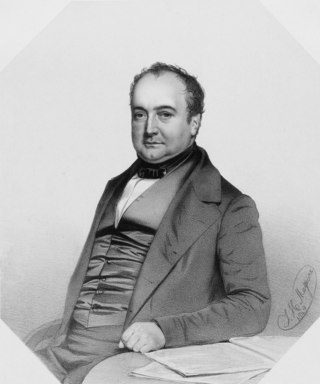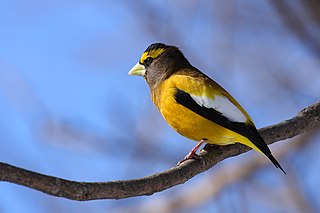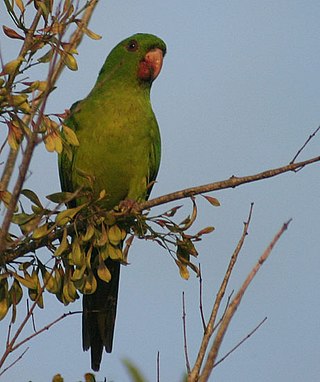
Ornithology is a branch of zoology that concerns the study of birds. Several aspects of ornithology differ from related disciplines, due partly to the high visibility and the aesthetic appeal of birds. It has also been an area with a large contribution made by amateurs in terms of time, resources, and financial support. Studies on birds have helped develop key concepts in biology including evolution, behaviour and ecology such as the definition of species, the process of speciation, instinct, learning, ecological niches, guilds, island biogeography, phylogeography, and conservation.

Birdwatching, or birding, is the observing of birds, either as a recreational activity or as a form of citizen science. A birdwatcher may observe by using their naked eye, by using a visual enhancement device like binoculars or a telescope, by listening for bird sounds, or by watching public webcams.

The great egret (Ardea alba), also known as the common egret, large egret, or great white egret or great white heron, is a large, widely distributed egret. The four subspecies are found in Asia, Africa, the Americas, and southern Europe. Recently it is also spreading to more northern areas of Europe. Distributed across most of the tropical and warmer temperate regions of the world, it builds tree nests in colonies close to water.

Charles Lucien Jules Laurent Bonaparte, 2nd Prince of Canino and Musignano was a French naturalist and ornithologist. Lucien and his wife had twelve children, including Cardinal Lucien Bonaparte.

The evening grosbeak is a passerine bird in the finch family Fringillidae found in North America.

Citizen science is research conducted with participation from the general public, or amateur/nonprofessional researchers or participants for science, social science and many other disciplines. There are variations in the exact definition of citizen science, with different individuals and organizations having their own specific interpretations of what citizen science encompasses. Citizen science is used in a wide range of areas of study including ecology, biology and conservation, health and medical research, astronomy, media and communications and information science.
The Cornell Lab of Ornithology is a member-supported unit of Cornell University in Ithaca, New York, which studies birds and other wildlife. It is housed in the Imogene Powers Johnson Center for Birds and Biodiversity in Sapsucker Woods Sanctuary. Approximately 250 scientists, professors, staff, and students work in a variety of programs devoted to the Lab's mission: interpreting and conserving the Earth's biological diversity through research, education, and citizen science focused on birds. Work at the Lab is supported primarily by its 75,000 members.

The green parakeet, green conure or Mexican green conure is a New World parrot. As defined by the International Ornithological Committee (IOC), it is native to Mexico and southern Texas in the Rio Grande Valley..

Frank Bennington Gill is an American ornithologist with worldwide research interests and birding experience. He is perhaps best known as the author of the textbook Ornithology, the leading textbook in the field.

The Colombian crake is a species of bird in the subfamily Rallinae of the rail, crake, and coot family Rallidae. It is found in Colombia, Ecuador, and Panama.

The white-eyed attila or dull-capped attila is a species of bird in the passerine family Tyrannidae, the tyrant flycatchers. They are found in Bolivia, Brazil, Colombia, Peru, and possibly Ecuador. Its natural habitat is subtropical or tropical swamps. It can be found at altitudes as high as 300 m (980 ft).

The Rio de Janeiro antwren is a bird in subfamily Thamnophilinae of family Thamnophilidae, the "typical antbirds". It is endemic to Brazil.

John Weaver Fitzpatrick is an American ornithologist primarily known for his research work on the South American avifauna and for the conservation of the Florida scrub jay. He is currently the Louis Agassiz Fuertes Director of the Cornell Lab of Ornithology in Ithaca, New York.
The Sinú parakeet is a bird in subfamily Arinae of the family Psittacidae, the African and New World parrots. BirdLife International's Handbook of the Birds of the World recognizes it as a full species. The International Ornithological Committee (IOC), the South American Classification Committee of the American Ornithological Society, and the Clements taxonomy treat it as a subspecies of the painted parakeet.
The Great Backyard Bird Count (GBBC) is a community science project in ornithology. It is conducted annually in mid-February. The event is supported by the Cornell Lab of Ornithology and the National Audubon Society. During this four-day event, birdwatchers around the world are invited to count and report details of birds in the area in which they live. Data collected is submitted in eBird an online web interface, and compiled for use in scientific research. The GBBC was the first community science project to collect bird sightings online and display results in near real-time.
eButterfly is a real-time, online database and photo storage program. It provides a way for the butterfly community to report, organize, and access information about butterflies in Central and North America and the Caribbean. eButterfly provides detailed sources for basic data on butterfly abundance, distribution, and phenology at a variety of spatial and temporal scales across the region. eButterfly is maximizing the utility and accessibility of the vast numbers of butterfly observations, photographs, and collections made each year by recreational and professional butterfly enthusiasts. Observations can be entered directly to the eButterfly website. As of March 2021, eButterfly users have contributed over 429,000 observations.

Rheiformes is an order that contains the family Rheidae (rheas). It is in the infraclass Paleognathae, which contains all ratites. Extant members are found in South America. While the IOC World Bird List and the Clements Checklist categorise Rheiformes as its own order, the BirdLife Data Zone includes rheas, along with ostriches, tinamous, cassowaries, emu, and kiwis, in the order Struthioniformes. Of the two extant species of rheas recognized by the IUCN Red List, as of 2022, Rhea americana is listed as near threatened, while Rhea pennata is listed as least concern. From 2014 to 2022, the IUCN recognised Rhea tarapacensis as a separate species, and listed it as near threatened in its last assessment in 2020; in 2022, it was again recognised as a subspecies of R. pennata.

Observation.org is a worldwide platform of naturalists, citizen scientists, and biologists to collect, validate and share biodiversity observations. Observation.org may be accessed via its website or from its mobile applications like ObsIdentify. The Observation.org database holds 233 million nature observations and 79 million photos. It is published and hosted in the Netherlands under Dutch and European law by the non-profit foundation Observation International.
Birds of the World (BoW) is an online database of ornithological data adapted from the Handbook of the Birds of the World and contemporary reference works, including Birds of North America, Neotropical Birds Online, and Bird Families of the World. The database is published and maintained by the Cornell Lab of Ornithology and collects data on bird observations through integration with eBird. The database requires a subscription to access the majority of its entries, but offers institutional access to many libraries and birding-related organizations, participating in the National Information Standards Organization's Shared E-Resource Understanding practice as a publisher.














